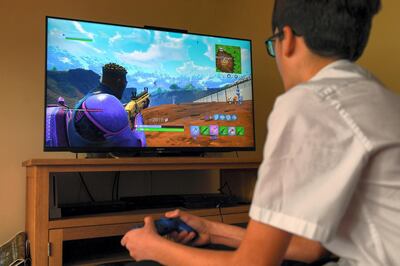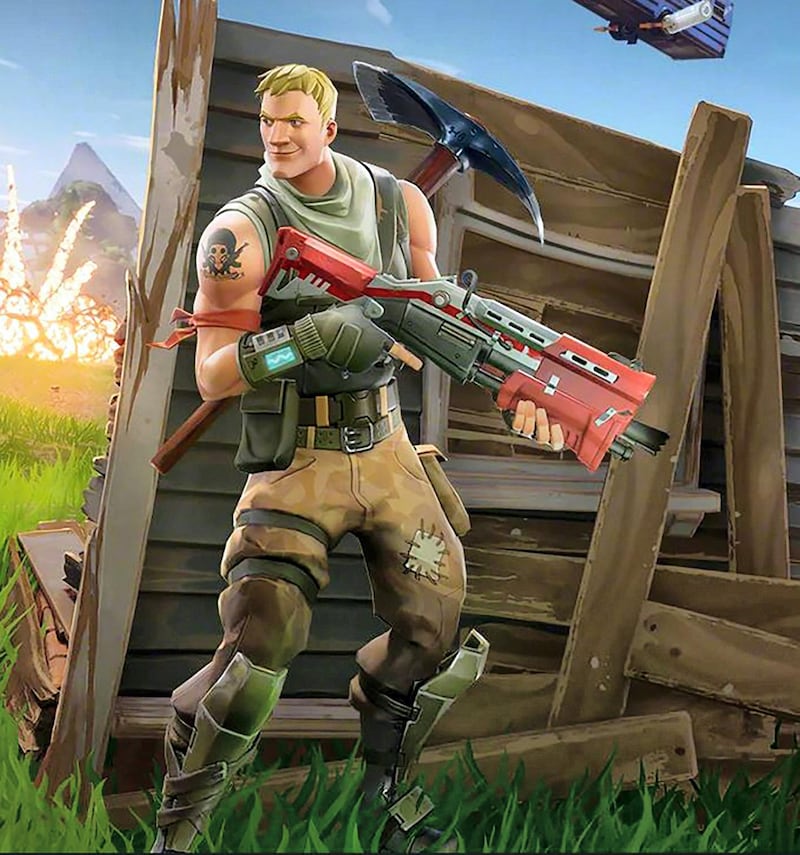Parachuting from an aircraft and landing on a remote island is never a great situation to find yourself in. In the context of online multiplayer game Fortnite Battle Royale, however, your prospects are particularly grim. Once you have made the downward glide to ground level, you and 99 other participants engage in a nerve-shredding test of agility, resourcefulness and gun-toting skill, with the ultimate aim of destroying your compadres and becoming the very last person standing.
“Kill or be killed” is hardly a new gaming concept, but over the past few months Fortnite Battle Royale has become the most popular free-to-play console game of all time, and a cultural phenomenon that resonates way beyond gaming.
More than 125 million people have played it, millions more have watched streaming videos of live gameplay, and rappers, footballers and schoolchildren alike have become obsessed by every facet of it, from weaponry to avatars’ victory dances. With a release for Android phones expected in the near future, Fortnite Battle Royale’s status as a leading global leisure pursuit is assured.
_______________
Read more:
Gaming disorder? It's no more dangerous than chocolate
Game review: Dark Souls: Remastered is as close to perfection as you can get
Here's why the new God of War is better than ever before
_______________
It has little in common with other games that have successfully coaxed non-gamers into virtual worlds. World of Warcraft, FarmVille, Angry Birds and Minecraft all let you dip in and out at leisure, have a fairly docile pace and certainly never tell you that you've "lost" the game. But when you make your first venture into Fortnite Battle Royale, you're like a lamb to the slaughter. With little idea of how to protect yourself or target your enemies, you wander aimlessly around Wailing Woods or Fatal Fields until someone with greater tactical skill than you kills you with a shotgun. Game over. And yet millions of people find themselves drawn back to have another go, and then another, attracted by the aesthetic of the game, the buzz surrounding it and the faint possibility that they might, one day, be victorious.
The original version of Fortnite (Fortnite Save The World) was no deathmatch but a survival game (a genre that includes games such as Minecraft, DayZ and The Long Dark). However, it failed to set the world alight on its release last year. At the same time, however, another game, PlayerUnknown's Battlegrounds (PUBG), was defining the "battle royale" genre and gaining a huge amount of attention. Devised by Irishman Brendan Greene and based loosely on the Japanese film Battle Royale, PUBG introduced the now familiar idea of 100 people parachuting onto a remote island before battling each other to the death. By the end of 2017, it had sold 20m copies, and in September it broke the record for having the most concurrent players online at once: approximately 1.3m, a colossal amount.
The public's newfound enthusiasm for this style of shoot-out didn't go unnoticed by Fortnite's publisher, Epic Games, who soon released their Battle Royale version of Fortnite that was, crucially, free to download and play. Initially available for PC and Mac, PS4 and Xbox One (and later iOS and Nintendo Switch) it quickly became a phenomenon. On February 4, the game was played by 3.4m users simultaneously. It had blown PUBG's record out of the water.

Pinning down the reasons for Fortnite’s huge success aren’t easy – not least because the gaming press are far from united in their enthusiasm for it. Its perception as kid-friendly has undoubtedly had a huge viral effect, magnified by hugely popular gamers such as Ninja and dakotaz who stream their games live on video sites such as Twitch and YouTube.
In March, Ninja (real name Tyler Blevins) participated in a heavily publicised Fortnite battle along with Grammy Award winner Drake, American football player JuJu Smith-Schuster and rapper Travis Scott, pulling in 630,000 viewers. The buzz caused by that game led to a snowballing interest in Fortnite Battle Royale, assisted by Epic's regular introduction of new features to keep existing players hooked. And it still cost nothing to play.
It could, however, cost you a packet if you became obsessed with it. According to one estimate, Epic Games banked US$296m (Dh1.08 billion) in April alone as a result of Fortnite players converting their (and their parents’) hard-earned cash to the in-game currency, V-Bucks. Those V-Bucks are then spent on items for their character such as dinosaur costumes, disco balls and “emotes”, such as dance moves and celebratory gestures. These items give the players no competitive advantage, but it turns out that making your character stand out from the crowd isn’t just a money-spinner: it’s also a business model.
Video game crazes come and go, but some believe that Fortnite marks a new chapter in the evolution of gaming, where storylines and visuals are displaced at the top of the charts by games whose popularity is defined by neatly-dressed avatars in battle with one another.
It’s telling that in recent weeks, battle royale versions have been announced of such eagerly awaited games such as Call Of Duty: Black Ops 4 and Battlefield V.
Over the next few months, many other power struggles and landgrabs will be precipitated by the unexpected success of battle royales. The Android release of Fortnite later this year will accelerate interest in mobile gaming and boost sales of high-powered phones such as Asus’s new ROG (Republic of Gamers). Sony, the market leader in video consoles by some distance, is successfully curbing Fortnite’s potential reach by preventing PS4 gamers from competing directly with their Xbox and Nintendo cousins, or even moving a Fortnite character from PS4 to a different console. Meanwhile, PUBG, the flag-bearer for the battle royale movement, recently commenced legal action against Epic Games, alleging that Fortnite Battle Royale violates its copyright.
But for the time being, Epic is sitting pretty, having just announced $100m in prize money to be made available for a global Fortnite competition to start later this year.
The Fortnite World Cup may fall short of generating as much global interest as Fifa’s football equivalent, but one thing is clear: by then, Fortnite Battle Royale will be the biggest eSport in the world.





